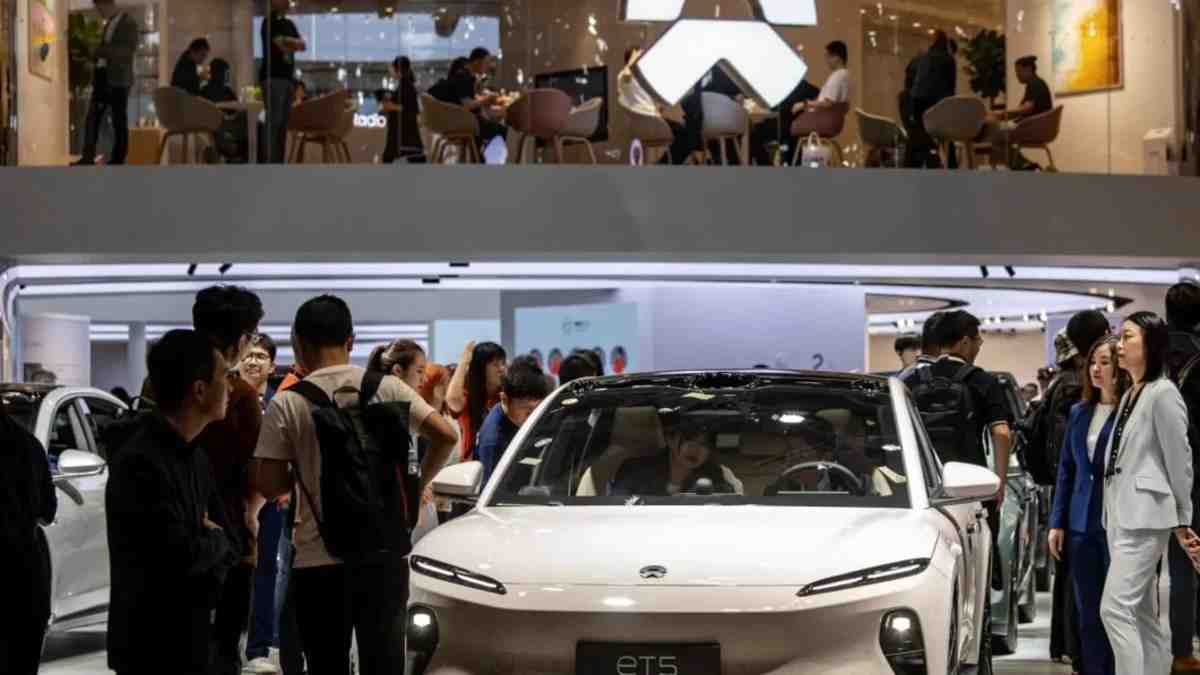China's EV sector is hemorrhaging cash - and it doesn't matter

Image: Collected
Losing money on the cars they produce and sell isn’t a radically new concept for automotive manufacturers. But in China, that economic conundrum has risen to something of an art form. A recent report in the New York Times takes a broad look at how builders of electric cars in China are able to stay in business despite losing money. The main reason? Robust government subsidies that allow the manufacturers to not only survive, but thrive.
One new development—one that has likely in part prompted the Times’ story—is an investigation by the European Union into the way that electric car manufacturers in China have received such subsidies, a step that could lead Europe to impose tariffs on the EVs that the country exports.
Times reporter Keith Bradsher users Chinese company Nio as one focus of his story, explaining that Neo employs 11,000 people in research and development, but sells only 8,000 cars per month. Nio, he writes, “lost $835 million from April through June, or $35,000 for each car it sold.” But Nio soldiers on, thanks to funds injected by government and state-controlled banks.
Advanced technologies—especially centered on the batteries that power all EVs—is also at issue, as car makers in the US and Europe try to make headway in their competition with the Chinese. “They have pioneered new battery chemistries that allow long-range driving at considerably reduced cost,” the report says. “China also dominates electric motor production, and in designing high-efficiency systems that tie together batteries and motors.”
The global competition to achieve superiority in the electric vehicle marketplace has also created strange bedfellows, industry-wise. “China’s technological edge has convinced some European automakers that it makes economic sense to strike partnerships even though they compete with Chinese exporters,” Bradsher writes.
For instance, the story notes that in April, Volkswagen announced it would build a $1.1 billion car development center in the central China city of Hefei. And in July, VW paid $700 million for a 4.99 percent stake in XPeng, a money-losing Chinese electric car start-up, putting a valuation of $14 billion on XPeng.
Speaking of bedfellows, the Times piece weaves in an intriguing notion tying together smartphones and automobiles. “Selling smartphones and electric cars together has long been the dream of the electric car and smartphone industries,” the report suggests. The cellphones, which work closely with a car’s self-driving functions, “can be replaced much more frequently as technology improves than semiconductors in cars, which must pass lengthy safety reviews.’’
A detailed read of the story, titled “China’s EV Threat: A Carmaker That Loses $35,000 a Car,” can be found here. A subscription may be required for access.
One new development—one that has likely in part prompted the Times’ story—is an investigation by the European Union into the way that electric car manufacturers in China have received such subsidies, a step that could lead Europe to impose tariffs on the EVs that the country exports.
Times reporter Keith Bradsher users Chinese company Nio as one focus of his story, explaining that Neo employs 11,000 people in research and development, but sells only 8,000 cars per month. Nio, he writes, “lost $835 million from April through June, or $35,000 for each car it sold.” But Nio soldiers on, thanks to funds injected by government and state-controlled banks.
Advanced technologies—especially centered on the batteries that power all EVs—is also at issue, as car makers in the US and Europe try to make headway in their competition with the Chinese. “They have pioneered new battery chemistries that allow long-range driving at considerably reduced cost,” the report says. “China also dominates electric motor production, and in designing high-efficiency systems that tie together batteries and motors.”
The global competition to achieve superiority in the electric vehicle marketplace has also created strange bedfellows, industry-wise. “China’s technological edge has convinced some European automakers that it makes economic sense to strike partnerships even though they compete with Chinese exporters,” Bradsher writes.
For instance, the story notes that in April, Volkswagen announced it would build a $1.1 billion car development center in the central China city of Hefei. And in July, VW paid $700 million for a 4.99 percent stake in XPeng, a money-losing Chinese electric car start-up, putting a valuation of $14 billion on XPeng.
Speaking of bedfellows, the Times piece weaves in an intriguing notion tying together smartphones and automobiles. “Selling smartphones and electric cars together has long been the dream of the electric car and smartphone industries,” the report suggests. The cellphones, which work closely with a car’s self-driving functions, “can be replaced much more frequently as technology improves than semiconductors in cars, which must pass lengthy safety reviews.’’
A detailed read of the story, titled “China’s EV Threat: A Carmaker That Loses $35,000 a Car,” can be found here. A subscription may be required for access.
Source: https://www.autoblog.com